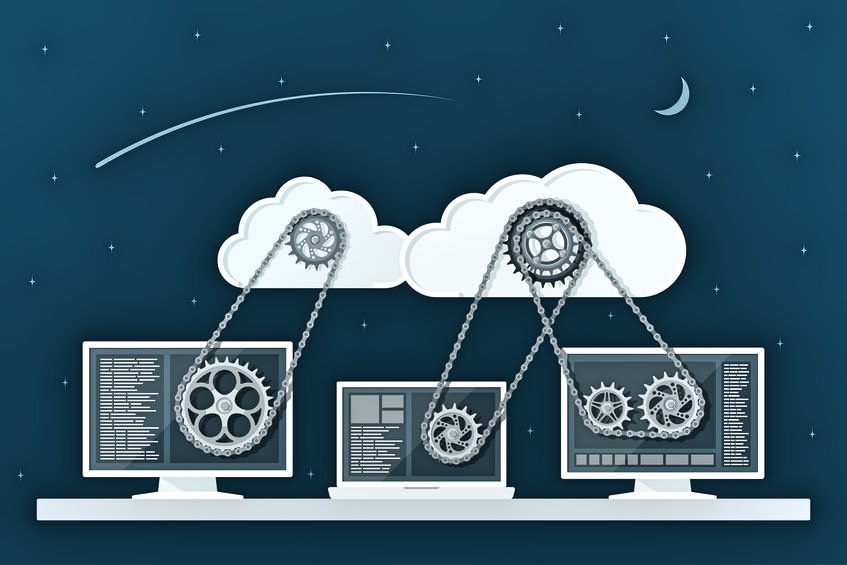Hybrid and multicloud deployments are now industry standard in enterprises. IDC predicts that by 2020, more than 90% of global organisations will have a multicloud strategy in place. However, as enterprises adopt multiple clouds, they struggle with the management of applications and workloads in hybrid environments. Red Hat, a provider of enterprise-grade open source solutions announced the next version of its operating system Red Hat Enterprise Linux 8 (RHEL 8), in May this year. In this article, we discuss the features in RHEL 8 that automate and simplify management in multicloud environments. Red Hat also launched Red Hat OpenShift 4 which offers full stack automation.
Previous stories in the series:
Red Hat Open Brand Project: New Hat, Same Soul
How Red Hat Enterprise Linux 8 is Solving Multicloud Challenges for Enterprises
Here are some of the new features and enhancements in RHEL 8.
Insights: Datacentres are growing in scale and scope, and workloads are becoming increasingly complex. The skills and competencies required to deploy and maintain Linux-based environments become critical, yet these skills are scarce. That’s where enterprises struggle. In its interaction with customers for over 15 years, Red Hat has accumulated expertise and knowledge with datacentres, hybrid, and multicloud environments. It shares this intelligence through a subscription service called Red Hat Insights, which is built into RHEL 8. Insights is a knowledge base with predictive analytics capabilities that proactively alert customers in advance when something is about to fail. It helps identify and remediate IT issues, security vulnerabilities, and stability problems. Thus administrators can avoid problems and minimise downtime in production environments.
“Insights has captured all the work we have done through the years with several customers and all the intelligence coming from those support requests that customers raise,” said Ameeta Roy, Director – Solution Architecture, Red Hat India and South Asia. “All the typical problems that we find in the environment, in Linux run datacentres, all the typical problems that we have seen over the years… we have captured all that intelligence to provide a predictive analytics capability to our customers. No matter where their applications are residing, we can proactively tell them what are the things that could go wrong, and suggest the remediation as well.”
Red Hat Smart Management: This is a layered add-on for Red Hat Enterprise Linux that helps IT teams to leverage on the benefits of hybrid clouds while minimising the inherent management complexities. It combines Red Hat Satellite for on-premise systems management and cloud management services, for distributed Red Hat Enterprise Linux deployments. Red Hat Smart Management provides capabilities to manage, patch, configure and provision Red Hat Enterprise Linux deployments across the hybrid cloud.
“This SaaS-based solution enables you to manage your entire Red Hat environment in terms of patching of systems, provisioning, managing subscriptions, compliance, and identifying vulnerabilities that your system could be exposed to,” explained Roy.
Application Streams: This feature is about managing updates. Fast-moving languages, frameworks, and developer tools are updated frequently in this stream without impacting the core resources. It melds faster development innovation with production stability in an enterprise-class operating system.
Web Console: The GUI-based console provides an intuitive interface for managing and monitoring various aspects of the Red Hat Enterprise Linux system. This includes monitoring the health of virtual machines to overall system performance. The GUI enables non-Linux users to do administration tasks that are typically done through the command line interface.
To improve ease of use, Red Hat Enterprise Linux supports in-place upgrades, providing a more streamlined, efficient and timely path for users to convert RHEL 7 instances to RHEL 8 systems.
System Roles: It automates the complex tasks around managing and configuring Linux in production. Powered by Red Hat Ansible Automation, System Roles are pre-configured Ansible modules that enable ready-made automated workflows for handling everyday, complex sysadmin tasks. This automation makes it easier for new system administrators to adopt Linux protocols and helps to eliminate human error as the cause of common configuration issues.
Universal Base Image: It is a userspace image derived from Red Hat Enterprise Linux for building Red Hat certified Linux containers. Universal Base Image provides a secure and reliable foundation for building enterprise-ready containerised applications. Applications built with the Universal Base Image can be run anywhere with the benefits of the Red Hat Enterprise Linux life cycle, and support from RHEL or Red Hat OpenShift Container Platform.
The Red Hat Universal Base Image is available to all developers regardless of whether they have or do not have a RHEL subscription.
“Universal Base Image is packaging all the dependencies, the runtime libraries, everything within that container, including the RHEL OS. The container image can either be deployed on the RHEL platform or any other OCI-compliant container platform. So you build once and deploy anywhere,” said Roy.
Operator Hub: It is a marketplace for container images. ISVs and third-parties in the ecosystem are building functionality and can share it through certified images. The Operator Hub is a universal registry for images and is a collaborative effort in partnership with AWS, Microsoft, and Google. These images can be published through the Operator Hub and shared with customers.
Container Toolkit: Based on open standards, Container Toolkit provides technologies for creating, running, and sharing containerised applications. It helps to streamline container development and eliminates the need for bulky, less secure container daemons.
Security: To enhance security, RHEL 8 supports the OpenSSL 1.1.1 and TLS 1.3 cryptographic standards. This provides access to the strongest and latest standards in cryptographic protection that can be implemented system-wide via a single command, limiting the need for application-specific policies and tuning.
OpenShift4: Launched on May 8, this is Red Hat’s enterprise-grade version of Kubernetes, the open source container orchestration system. OpenShift 4.1 is now in general availability, and it is designed to deliver a cloud-like experience across the hybrid cloud by driving automated updates across Kubernetes deployments everywhere. Paired with enhanced developer flexibility and backed by Kubernetes Operators, this helps to lay a more secure and consistent foundation for modern and emerging cloud-native workloads.
More than 1,000 organisations across industries and around the world use OpenShift to accelerate application development and delivery.
Conclusion
With all these new features and enhancements introduced through RHEL 8, it’s clear that it has evolved to become a lot more than an enterprise-grade operating system. These features simplify the management of applications and workloads in hybrid, multicloud environments through GUI-based dashboards (Red Hat Smart Management and Web Console), and container orchestration (OpenShift). By abstracting the hardware layer, developers do not need to worry about where their code will run (Container Toolkit, Universal Base Image).
There are more exciting things coming soon from Red Hat. For instance, Red Hat OpenStack platform 15 and Red Hat Enterprise Linux CoreOS.
With all these announcements and solutions, it’s clear that Red Hat wants to be in every datacentre, on every cloud, and hosting every application.
With inputs from Red Hat press releases. DIGITAL CREED has not tested these features.









